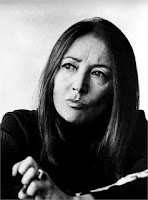First Martyrs' Day
Nero blamed Christians for his own crimes
Christians martyred in Rome during the reign of Nero in AD 64 are remembered every year on this day in Italy. The Catholic Church celebrates the lives of the many men and women put to death by Nero, who are now known as i Primi Martiri, first martyrs of the Church of Rome, with a feast day every year on 30 June. In the summer of AD 64, Rome was devastated by fire. The unpopular emperor Nero, who wanted to enlarge his palace, was suspected of setting fire to the city himself but he accused the early Christians then living in Rome and had them executed. Some were fed to wild animals, some crucified, while others were burnt to death to illuminate the sky and provide evening entertainment. The feast of the First Martyrs came into the Church calendar in 1969 as a general celebration day for the early Roman martyrs. It falls the day after the feast day of Saints Peter and Paul, the patron saints of Rome. After the fires had cleared the existing buildings away, Nero had an elaborate villa, his Golden House (Domus Aurea), built a short walk away from the Colosseum on Palatine Hill in Rome. Read more…
___________________________________________________________
Gianrico Carofiglio - novelist
Ex anti-Mafia judge now bestselling author
The novelist Gianrico Carofiglio, whose books have sold more than five million copies, was born on this day in 1961 in Bari. Carofiglio is best known for a series of thrillers featuring the character of lawyer Guido Guerrieri but he has also written a number of novels featuring other characters, still mainly in the crime thriller genre. One of them, his 2004 novel Il passato è una terra straniera (The Past is a Foreign Country), was made into an acclaimed film, directed by Daniele Vicari and starring Elio Germano, who appeared in the multi award-winning TV series Romanzo Criminale, and Michele Riondino, who played Andrea Camilleri’s most famous detective in the TV series The Young Montalbano. Carofiglio drew inspiration and much technical knowledge from his career as a magistrate, which culminated in him becoming deputy prosecutor in the Anti-Mafia Directorate of his home town, Bari. He was an advisor to the anti-Mafia committee in the Italian parliament in 2007 and served as senator between 2008 and 2013. For many years, he was provided with a police bodyguard. Read more…
_____________________________________________________________
Allegra Versace – heiress
‘Favourite niece’ who inherited Gianni fortune
The heiress Allegra Versace, owner of half the Versace fashion empire, was born on this day in 1986 in Milan. The daughter of Donatella Versace, the company’s chief designer and vice-president, she was the favourite niece of Gianni Versace, who founded the fashion house in 1978. When Gianni was shot dead outside his mansion in Miami in July 1997, Allegra was just 11 years old but could look forward to becoming immensely rich after it was announced that her uncle had willed his share of the business, amounting to 50 per cent, when she reached her 18th birthday. By the most recent valuation of the Versace group, this means Allegra – now 30 – has a personal fortune worth $800 million. The remainder of the empire is owned by her mother, who has 20 per cent, and Gianni’s older brother, Santo Versace, who has 30 per cent. Yet the promise of wealth and privilege did not bring her happiness as a young woman. The daughter of Paul Beck, a former Versace model to whom Donatella was briefly married, Allegra enjoyed a contented childhood in which she read books and played the piano given to her as a gift by Sir Elton John, a family friend, but her world was shattered when her uncle was killed. Read more…

























